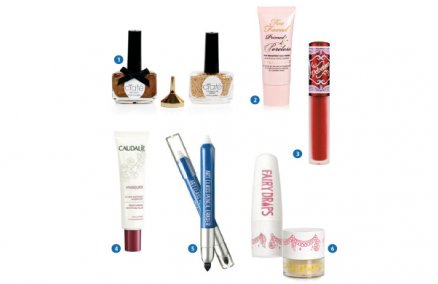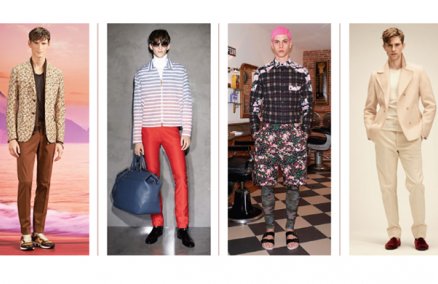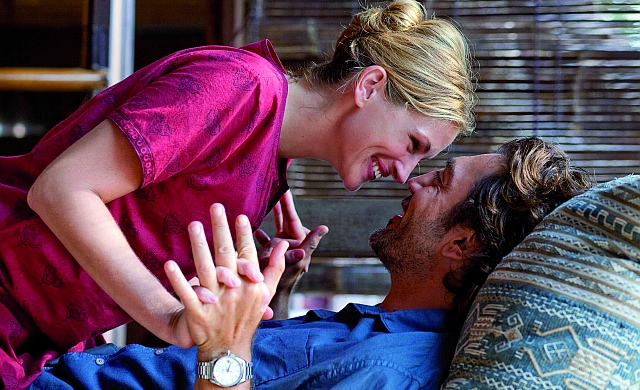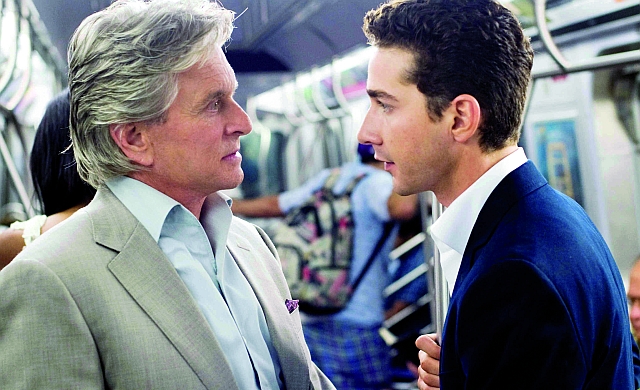In our 15 years covering the scene in Singapore, the city has changed almost beyond recognition. It’d be hard to overstate just how much we love the place right now. But that’s not to say it’s perfect, and few people know that better than the folks out there pushing the creative boundaries. To take the nation’s pulse, we sat down with some of the city’s most prominent industry players—social and lifestyle entrepreneurs Elim Chew (77th Street), Chris Lee (Asylum) and Christopher John Fussner (Sifr); acclaimed filmmakers Royston Tan (15) and Eric Khoo (My Magic); award-winning playwright Alfian Sa’at (Corridor); author-musician X’ho (Skew Me You Rebel Meh?); comedian Irene Ang (Fly Entertainment); and PR specialist Tracy Phillips (Present Purpose)—for a frank and honest discussion about the state we’re all in.
Who has the best job in Singapore these days?
Elim Chew: I think the president has a wonderful job. Generally, the person who is able to do what they want to do, waking up when they want to wake up, and managing their own timeline and perhaps being able to go on a sabbatical for six months [laughs]—that person has the best job, even if it’s the toughest.
Eric Khoo: The president—definitely.
X’ho: State Ministers.
Christopher John Fussner: Minister Mentor Lee Kuan Yew.
Irene Ang: I think taxi drivers have the best job. Their time is flexible, they know where to get the best food, they hear the juiciest stories and always have an audience when they want to tell their stories! You cannot run or jump out of the car when they are talking!
I-S 15th Anniversary Round Table Discussion from IS Video on Vimeo.
State of Singapore discussion. Participants: Elim Chew, Tracy Phillips, Royston Tan, Alfian Sa'at and Chris Lee.
Moderated by Terry Ong, I-S Associate Editor. Hosted at The White Rabbit.
Who has the crappiest job then?
Alfian Sa’at: Journalists. I wouldn’t want to be in their position ...especially if you’re kind of independent minded and have opinions of your own, [given] the kind of compromises that you have to make along the way and the kind of editorial contortions that you have to put up with.
Chris Lee: I have a very mainstream view about life, especially about the immigrants who built this city; and how we still don’t want them to live near us, and how we think that having their quarters near our homes devalues our land, which is really sad. They probably have the crappiest job.
Irene Ang: Yeah, just look at the jobs that Singaporeans don’t pick up!
Eric Khoo: The hangman, because he literally gets peanuts for the executions and there is so much work involved like calculating the drop, the length of rope and the weight of the condemned. And it could be a bloody mess if done wrong. And I don’t fancy killing.
X’ho: Maids and cab drivers.
Christopher John Fussner: The Courtesy Lion.
Royston Tan: Filmmakers have the crappiest job. We’re all unemployed!
Is it just us, or is the city getting way too expensive?
Elim Chew: For someone like me who started a business in the past; I used to  pay single digits for per sq. ft., but rental today is $40-50 per sq. ft. It’s now three times the price, but one third the size…
pay single digits for per sq. ft., but rental today is $40-50 per sq. ft. It’s now three times the price, but one third the size…
Tracy Phillips: It’s true. Singapore is even more expensive now than New York, which is ridiculous. Per sq. ft., we are now triple the price of downtown Manhattan.
Irene Ang: If I were to tell my late grandmother how much I pay for parking and ERP these days, I think she [would] faint...
Alfian Sa’at: A very peculiar thing about Singapore is that it’s a city state, but at the same time, it’s also a heartland. The kind of tension that we have which exists when the idea of the suburb and city is mixed together might have indirectly influenced the state of things now…
Royston Tan: Which is why I suggest that the government bring down the GST back to three percent. If one day, if we could only get all the decision makers to stay in a HDB flat, take public transport and experience what normal people go through … they’d really understand how expensive this city is.
Christopher John Fussner: That said, a 60-cent kopi here is still more do-able than an eight dollar latte elsewhere…
Is it because we’re over-ambitious? Does Singapore take itself way too seriously?
Alfian Sa’at: I remember (ex-Prime Minister) Goh Chok Tong once saying that “we take our fun seriously,” which is the equivalent of throwing a big giant wet blanket over the whole island. I can’t think of a worse party-pooping statement, really. As for being over ambitious, I think there’s nothing wrong with that, except that it’s a very singular form of ambition, which can’t see beyond economic imperatives.
X’ho: You bet. Earnest is our middle name.
Tracy Phillips: It sometimes feels that way, especially whenever I hear another announcement that we’re going to be the next “hub” of something. We shouldn’t forget there’s beauty in letting things grow organically, or that at the end of the day, the proof is in the pudding, not the press releases. You can’t fake it to make it. It has to be organic.
Irene Ang: The government, yes! The people, not really. In fact Singaporeans really need to work harder and smarter or our foreign friends will really beat us in this game.
Eric Khoo: Although sometimes I think that we do not take ourselves seriously enough—we have massive inferiority complexes in too many areas...
Elim Chew: Taking oneself too seriously or being ambitious is a personal choice. We have the freedom to choose what we want. To a carefree person, we are too serious. To a serious person, the carefree guy has a lousy attitude. So it’s all a choice and individual perception. Thank god I can still choose.
Chris Lee: I think ambition is fine if we know our own DNA. Like we know that we’re really organized and efficient. [Being sexy] requires more than just a Grand Prix. We’re still a little too uptight.
So how sexy are we then?
Eric Khoo: Well, Singapore may not be sexy to foreigners, but Singaporean chicks certainly are.
Royston Tan: Well that depends on how we perform in bed. Some people can be extremely charismatic behind closed doors, but obviously only a few as you can see from our declining birth rates [laughs].
Chris Lee: We’re definitely not sexy. We do our work well and we are trustworthy but we’re definitely lacking in the sex department.
Christopher John Fussner: Singapore is sexy, but there are varying degrees of sexiness; we’re not floating everyone’s boat just yet.
X’ho: Sexy, no. Nouveau hip, yes—insecure to the hilt, like our government.
So we’re hip and cool?
Eric Khoo: Very much so. To ourselves that is.
Elim Chew: Of course we are. How else can we be uniquely Singapore if we’re not? We have Integrated Resorts, held the first Youth Olympic Games, hosted the F1, and have a booming night entertainment [scene] earning the name of a city that does not sleep. If these [things] are not being stylish, then what is?
Alfian Sa’at: I’ll tell you three big strikes against cool—caning, hanging and chewing gum. To be hip or cool, we need soft power. It’s one of those things that we need to build domestically first because there’s still a cultural cringe over our own local products, this sense that we’re not at ease in our own skin.
Tracy Phillips: I hardly think of Singapore in these terms because it’s home. It’s familiar, it’s comfortable, it’s efficient. But most visiting friends from overseas think the city has some cool cache, in part because their initial ideas of Singapore were way more stiff and draconian.
So have we gotten rid of the stigma where we’re nothing more than a country that bans chewing gums and cane vandalizers? How far have we opened up over the years?
Christopher John Fussner: I’d say marketing tool rather than stigma. Minister Mentor Lee Kuan Yew laying down on the vandal back in the day was one of the best publicity moves of all time. Some people may have seen that as terrible but rest assured a lot more people saw that as great. The pace has been good … the amount of change that has come—both organic and injected—is a sight to see for anyone. We could use a little more love on the B-side though, but that’s just me.
Tracy Phillips: It’s been gradual. There has been a broader exchange of ideas and people as the Internet, affordable air travel and various government agencies have made Singapore more accessible to companies, visitors and the rest of the world. Some people might say having two casinos is a sign of Singapore opening up. But with film and media censorship laws, it still feels like we have a long way to go.
Alfian Sa’at: I think it’s been one big tedious and frustrating striptease when it comes to liberalization policies in Singapore. They’ll flash a bit of thigh, but then cover up some other spot. So you’re hopeful and tantalized for a moment—yay, there’s a multi-tier film rating system!—and then it stops short of expectations. Ditto with coming up with Speaker’s Corner—oh, finally, legal assembly!—and then telling you that a “cause-related gathering” of ONE person outside its parameters can result in a police officer telling you to “move on.”
Eric Khoo: We have come light years since the 70s and 80s but of course, there’s always room for improvement. But for heaven’s sake, drop the R21 rating because kids can legally f**k by the time they’re 18! I miss bringing my kids to a good fight film these days without any cuts!
Royston Tan: Well, it’s a bit better now. At least now we can have “coffee” with our ministers too [laughs].
If you could change one law here, what would it be?
 Irene Ang: The freedom to speak and write, for real.
Irene Ang: The freedom to speak and write, for real.
X’ho: Actually, I like the sexism in Section 377A [which criminalizes sex between mutually consenting adult men], so am not about to call for change!
Royston Tan: I’d declare public holidays every Monday, because people need to recover from clubbing on Sunday.
Elim Chew: $500 fine for anyone who complains for the sake of complaining. Singapore will be the richest nation in the world.
Chris Lee: We should make it easier for buskers to busk in the streets, like punks in Japan where they get to do anything they want without applying for licenses and dance in the street. Forget the license.
Christopher John Fussner: I agree. For some of the zoning laws for construction or setting up of establishments, we need a bigger mix of typologies in urban areas. We should shift the context of city centers, instead of viewing areas as defined segments of the city, put more emphasis on establishing “mini-towns.” Chinatown, Little India, Tiong Bahru and Haji Lane are good examples of this type of scale. I feel our urge to become more “modern” has offset the type of scale that’s workable for us. Everything is moving towards bigger is better, or areas with character and history moving towards a sort of tasteless gentrification.
Tracy Phillips: Relax censorship. I’m tired of watching TV and films and missing the nuances and the sub-text because of scene snips. And ban styrofoam use in hawker centers.
Alfian Sa’at: The Newspaper and Printing Presses Act. We simply need diversity in Singapore. Young people these days are apathetic and cynical because they’re not stupid, lah; they recognize propaganda when they read it and when we have [propaganda], it makes it less livable. Newspapers don’t reflect their reality and aspirations as it’s still very top down and paternalistic. What they’re hearing is not their own voice but issued from a loudspeaker.

So are we apathetic or empathetic?
X’ho: We’re apathetic and kiasu; but we can’t help it in a kiasu culture of fear, can we?
Eric Khoo: We’re both, actually.
Alfian Sa’at: We’re definitely apathetic. There are ... values like tolerance and inclusivity which should be taken more seriously; allowing certain people to be who they are. It’s always responsibility-based discourse versus rights-based discourse here … the idea of protecting the public rather than protecting the individual. We need to allow individuals the chance to express themselves.
Royston Tan: It’s important to celebrate differences and originality; just because we think differently, doesn’t mean we’re rebelling against the system. The government operates on a “top down” and “better safe than sorry” approach—but in this time and age, if we’re still so caught up in our comfort or safety zone, we’ll never catch up with the rest of the world.
Christopher John Fussner: In other words, we should also be more “sympathetic.”
What should Singaporeans be more concerned about?
Elim Chew: Things are looking brighter for us. The economy is improving, the bilateral relationship with our neighbor is also improving and major worries are being addressed by the goverment as pointed out by the Prime Minister in his National Day address. Instead of being concerned and being shackled by worries, we should do what we do best by planning ahead, keep on improving and make more money. If we’re struggling all the time, it’s hard for us to create change.
Alfian Sa’at: Demographic shifts due to globalization and immigration and how this chips away at what is a fragile notion of being “Singaporean.” And also for Singaporeans to be able to find our little pockets of freedom. Because at a certain age, we all do feel like we want to do something important like change society through all our little naïve ideals. We should also educate censors really. What I don’t get is the paranoia of a simple depiction of drug-taking or gangsterism to them is deemed as a promotion of a lifestyle. It’s weird…
Christopher John Fussner: Keeping our cultural fabric intact, more nationalism and embracing our own backyard.
Tracy Phillips: Nurturing creative thought. It’s going to take some originality and alternative thinking to stay relevant in the years to come.
X’Ho: Yes, Singaporeans need to stop being so brain-dead!
Chris Lee: Open our eyes and see the world around us. Only when we have an open mind can we excel in this new age. There’s a huge Asian wave in the next decade so it’d be a pity to miss it.
Eric Khoo: A thought or two for the foreign laborers who built this gorgeous metropolis for us to enjoy.
Royston Tan: That we always have a choice and we have rights.
So what about the next generation of Singaporeans? What are we doing about them?
Christopher John Fussner: No clue. Last I heard, we’re still trying to foster more creativity in our school systems.
Elim Chew: We need better education, definitely. For example, Singaporeans don’t know how to drive when they’re overseas because they’ve been so spoon-fed here with road signs (laughs). But at certain levels we need them to rely on their own instincts and gut feel on where they’re going. We lose that because everything is so laid out for us. I think that’s something that we need to educate the young about, including how they can respond more to the arts, films and culture.
Chris Lee: We should ban all the kids from staying at home with their parents. We should force them to move out. Then they can go out partying and have fun without getting nagged.
So what can we still do to have a good time here?
X‘ho: Get the hell away from Singaporeans!
Elim Chew: Read I-S Magazine, and then travel out.
Chris Lee: We need to travel for inspiration…
Royston Tan: I really have to travel out once every three months because I really like the disorganized mess in different countries. Everything is too structured here and very uninspiring.
Christopher John Fussner: A lot of my leisure time is spent eating and drinking … the idea of my own city garden plot has been on my mind for some time now. But yes, we still prefer to look at other people’s grass.
Irene Ang: I think there’s a growing group of us that are out for the experience, probably sick of running the rat race, and just wants to travel the world and be happy. I think this has come about also because we are well-travelled, well-read, and know that there is a lot out there other than chasing the 5Cs which has become a dated concept. But as Asians, it has been drilled in us to work hard and reap the rewards. So I think we are now conflicted between the two.
Finally, if you were making a movie or writing a book about Singapore, what would you call it?
Royston Tan: Disneyland with Capital Punishment.
Eric Khoo: Zombie State.
Tracy Phillips: It Is What It Is.
Christopher John Fussner: Kongsi, something about Singaporean clan wars pre-1965. Throw in a little romance and a struggling protagonist and we’ve got something...
Irene Ang: A period movie set in the 20s through 1996 called Singapore, complete with the dirty Singapore River, chewing gum and all.
Alfian Sa’at: The Boy Who Wore His Songkok to School.
Elim Chew: We Can Create the Change We Want to be directed by Royston Tan.





















 pay single digits for per sq. ft., but rental today is $40-50 per sq. ft. It’s now three times the price, but one third the size…
pay single digits for per sq. ft., but rental today is $40-50 per sq. ft. It’s now three times the price, but one third the size… Irene Ang: The freedom to speak and write, for real.
Irene Ang: The freedom to speak and write, for real.

